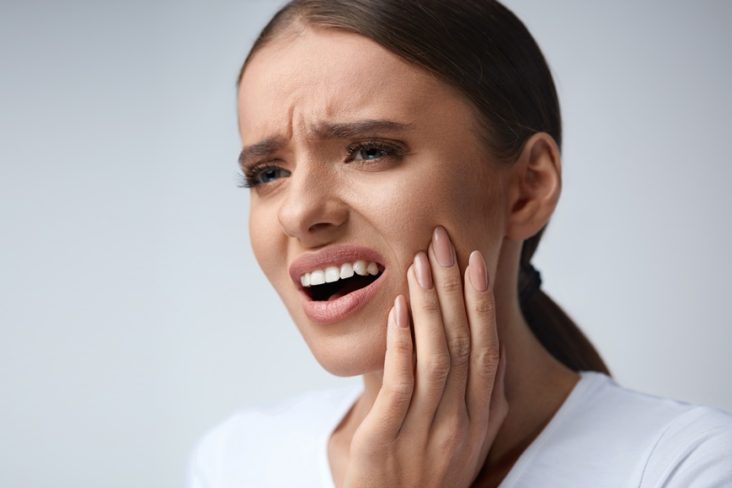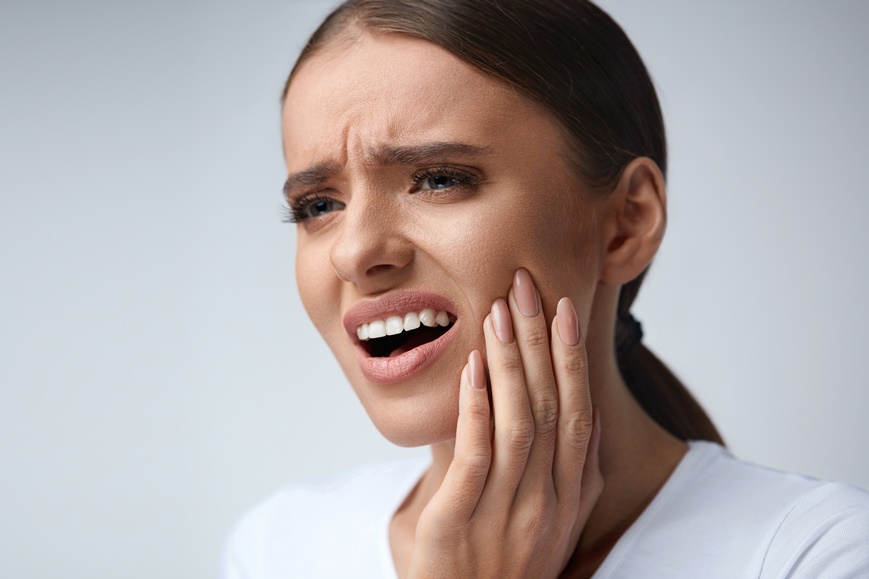A recent article in J. Orofacial Pain & Headache, (the Journal of the American Board of Orofacial Pain of which I am a Diplomat) reviewed success rates of treating TMJ problems by Occlusal Adjustment (also called Equilibration of teeth). Occlusal Adjustment was the final treatment after the Dentists initially used a nightguard, then a splint. Neither treatment helped the pain complaints of headache or facial pain. As a final effort to alleviate the symptoms the Dentists decided to equilibrate the teeth because, as the article suggests, “they didn’t know what else to do”. This was reported to have been done despite the dentist’s foreknowledge that equilibration had a low success rate in alleviating TMJ symptoms.
This large study was a survey of Japanese / US dentists who treated TMJ problems, treating by similar methods (splints and Occlusal Equilibration). The Dentists in the Research Based Network were known to treat TMJ regularly. Their experience included an average of two TMJ patients per month and they were considered to have expertise in treating TMJ problems. Statistics from a smaller USA group with similar qualifications were also used.
At our practice, we evaluate more patients with TMJ problems in a month than the experts in this study saw in 1-2 years. Practice guidelines suggest that we don’t use irreversible treatments such as equilibration. Despite statistics in this study showing that adjusting the bite has a low rate of success in treating TMJ dysfunction (joints that click, pop, or don’t move well), 64% of US dentists and 58% of the Japanese experts use equilibration/occlusal adjustment as a final treatment because their bite splints and nightguard didn’t help the patient’s symptoms.
This article also went on to say that the most common reason the Dentists who treated TMJ recommended occlusal adjustment /equilibration was a lack of confidence that the nightguard and splints would be of any help; so as time went by, they lessened the recommendation of the splint and treated by occlusal adjustment/equilibration as the only treatment to “see if it helped”. Once done, it’s not reversible unless you crown the teeth you’ve just ground down. Grinding down the back teeth worsens a TMJ joint problem.
In this study, there was no attempt to improve the joint function or mobility with any of the modalities used. Treatment was designed to relieve pain and bite irregularities; and this study suggested it only was effective alleviating pain in less than 50% of patients
In our practice and among Dentists who approach TMJ problems as the “joint-based problem” rarely used Equilibration/Occlusal Adjustment as a treatment. Occlusal Adjustment isn’t effective in restoring joint function. TMJ is a problem with the JOINT first. The acute dislocation of a TMJ shows up in many patients as an uneven bite (side effect of dislocated joint) and joint noise (clicking or popping).
If I were to adjust the bite by grinding it to fit the dislocated joint, it wouldn’t allow the joint to go back to normal. After a while, the clicking/popping will go away. This means the disc is completely dislocated. Arthritis will accelerate, and additional symptoms appear. How can you know if your joint is dislocated? Measure the opening and sideways mobility. If you can’t place your 4 fingers easily between your front teeth as you open, you have a JOINT problem. Three fingers usually suggest a chronic, arthritic joint- typically without pain. Normal opening is 50mm.
TMJ problems have a wide range of symptoms. That is why TMJD (Temporal Mandibular Joint Disorders) are called “The Great Imposter”- because symptoms vary greatly. The joint is almost ALWAYS the initial problem and typically begins with clicking or popping. This indicates the cartilage disc inside the joint is torn off of the bone and is interfering with movement.
As time goes on and the symptoms change, worsen and spread, the pains are usually attributed to migraines, ear problems, or neuralgia’s and are treated with medications that attempt to suppress the pain. We continue to have success in alleviating pain and restoring mobility in many advanced TMJ cases with orthopedic appliances even at this stage.
In my practice, which specializes in TMJD and Sleep Appliances, we use Orthotic Appliances not splints or nightguards. I also use low dose, high definition 3D imaging for the TMJ and have several technologies available to assess the complex symptoms associated with TMJ problems. Diagnostic and therapeutic injections are sometimes used. I am trained in Myofascial Treatment and Joint mobilization for diagnostic purposes.
Our goal is to restore the joint alignment and mobility to normal measurements. As the joint heals, the muscles relax, pain usually resolves and the jaw moves better. I rely on Physical Therapists, Chiropractors, and Physicians to help with complex diagnosis and ancillary therapies as we manage the joint rehabilitation process. Long term management is unique to each person’s condition and needs.





